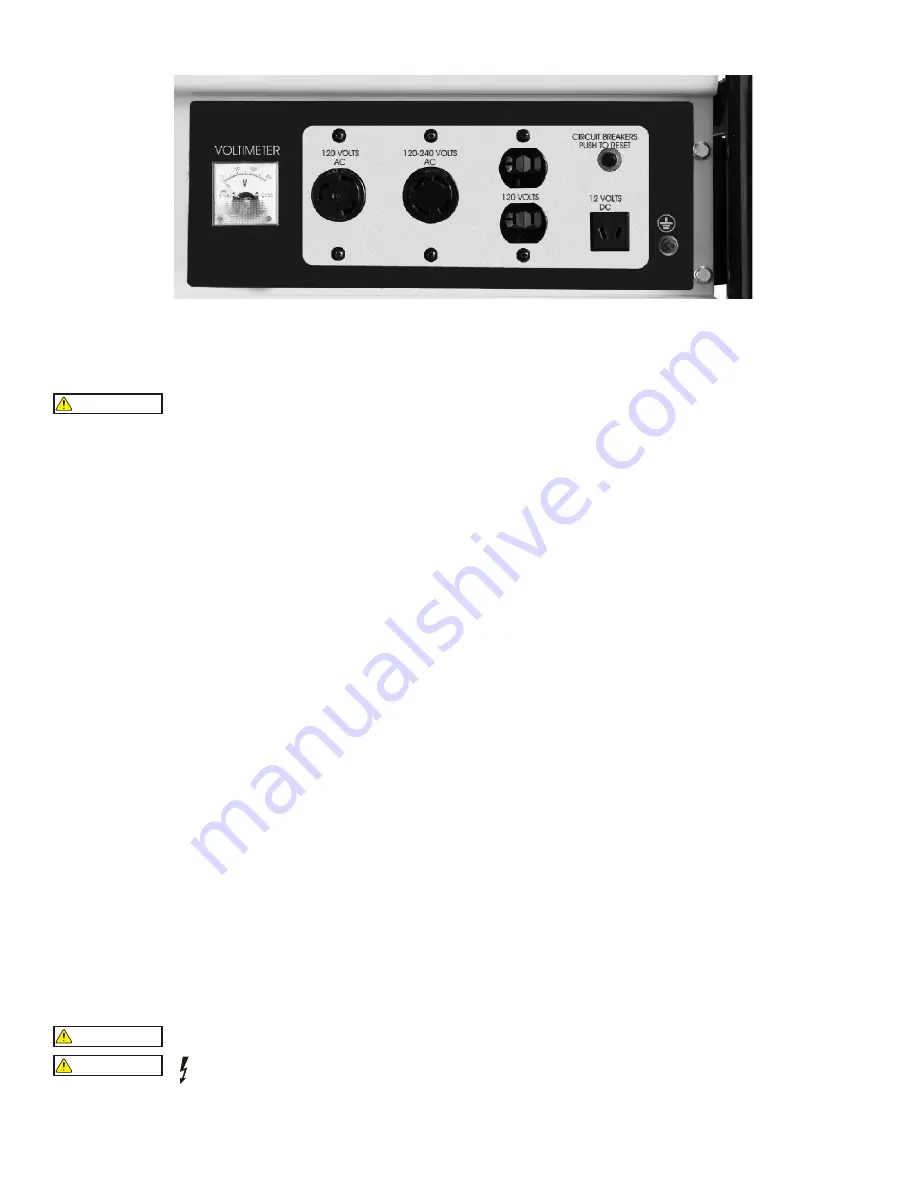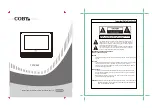
3
CAUTION
Let the engine stabilize and warm up for about five minutes after starting and before using.
DO NOT OVERLOAD THE GENERATOR. Add up the rated watts (or amps) of all loads to be connected at one time.
This total should not be greater than the rated wattage/amperage capacity of the generator.
CAUTION
STARTING WATTAGE REQUIREMENTS
1. Some appliances and tools are listed below with starting and running voltage and amperage requirements. Use the following formula to
convert voltage and amperage to wattage:
a. FORMULA: VOLTS X AMPS = WATTS
b. EXAMPLE(Voltage and amperage for 1/3 HP furnace fan):
120 Volts X 10 Amps = 1200 Running Watts
2. To determine the approximate starting wattage requirement for most appliances and tools with inductive type motors, multiply the wattage
that was calculated by 3 times to assure adequate generator capacity. If the nameplate information is not available, use the values on the
following page as a guide.
3. Remember that the starting and running wattage for resistive loads are the same. (Example: a 100-watt light bulb requires only 100 Watts to
start.) Most resistive loads will be listed in wattage.
4.Use the chart on the next page as a reference guide.
CONTROL PANEL COMPONENTS
CAUTION
Engine speed has been adjusted at the factory and establishes the proper electrical frequency output (60 Hz). Do not
attempt to increase the speed of the engine for higher output. Serious damage could occur to the generator or engine.
1.AC Voltmeter
Use the voltmeter as a visual aid. It indicates the AC voltage. The normal voltage meter reading is 230 to 250 volts resulting in proper
distribution of voltage to the receptacles. Excessive meter voltage could result in damage to appliances.
2.120 Volt AC Outlet, Locking Receptacle
The outlet is protected by a 25 Amp push-to-reset circuit breaker. This receptacle powers 120 Volt AC, 60 Hz, Single Phase loads requiring up
to 25 Amps or 3000 Watts of power.
3.120 / 240 Volt AC Outlet, Locking Receptacle
This outlet is protected by 25 Amp push-to-reset circuit breakers on each 120 Volt leg of the receptacle. This receptacle powers 240 Volt AC, 60
Hz, Single Phase loads requiring up to 23 Amps or 5500 Watts of power. If an L14-30P plug is wired for only one 120 Volt leg (3-wire
connection) then this receptacle powers 120 Volt AC, 60 HZ, Single Phase loads requiring up to 25 Amps or 3000 Watts of power.
4.120 Volt AC, Duplex Receptacle
Each receptacle is protected against overload by a 20 Amp push-to-reset circuit breaker. Use each receptacle to operate 120 Volt AC, single-
phase 60 Hz electrical loads requiring up to 20 Amps or 2,400 Watts of power.
5.Note:
Combined amperage of the receptacle is not to exceed circuit breaker limits.
6.12 VOLT, 10 Amp DC Outlet
This receptacle allows you to recharge a 12 Volt automotive or utility style storage battery with the battery charge cables provided. This
receptacle cannot charge 6 Volt batteries and cannot be used to crank an engine. It is also not recommended for charging deep cycle
batteries. Do not charge any batteries for extended periods without checking.
Содержание C41155
Страница 12: ...PARTS DIAGRAM 12...
































